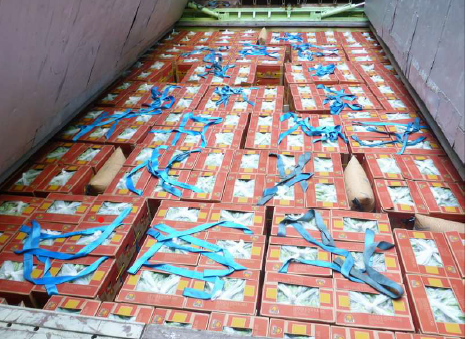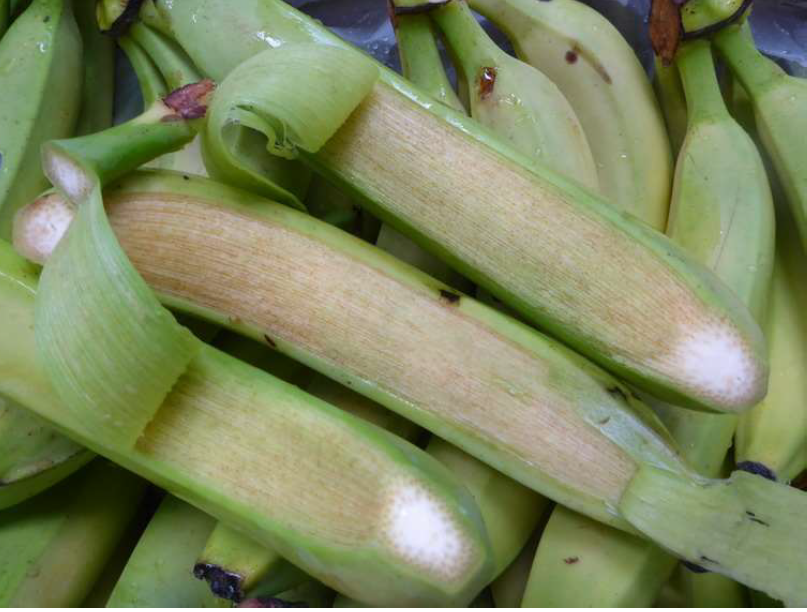Introduction
Bananas are grown in all tropical regions of the world, and most of the global production is consumed in home markets. However, a significant proportion of the production is intended for export, and the Cavendish variety is by far the most popular one for export. This variety is generally harvested in an unripe, green condition and transported to the end market as refrigerated cargo, either in containers or on specialised reefer vessels.
Though said to be the world’s most transported- and consumed fruit, bananas are also among the most sensitive cargoes that can be carried on a ship. Before a banana ends up on the shelves of your local supermarket it has been exposed to numerous external factors which all have a bearing on how the banana is finally presented. Many of the external factors affecting the quality of the bananas will not manifest themselves before the final stages of ripening and may cause claims being advanced against the ocean carrier. A selection of these issues will be discussed more in-depth in this article.
This article is based mainly on experience from handling of banana claims and is not a scientific article. For a more in-depth introduction to reefers and carriage of refrigerated cargoes, please refer to the Club’s article “Reefer Vessels – caring for cargoes“.
Production
Cavendish bananas are generally grown in large monoculture plantations in countries such as Ecuador, Costa Rica and Colombia. A successful growth phase is dependent on appropriate temperatures and adequate rainfall. Drought, heat waves and weather phenomena such as “El Niño” may severely affect the quality of the bananas. Cavendish bananas are also known to be vulnerable to a wide range of diseases.
It is an essential part of the banana export trade that the bananas are harvested in a “green” condition. This way, the ripening progression can be controlled during transport up and until presentation to the consumer markets. The ripening process of the bananas is irreversible if the bananas are allowed to enter the “climacteric” phase before transport.
Pre-shipment transport and storage
After harvesting in the fields, the bananas are transported inland or on rivers to central hubs where they are prepared for loading into containers or on to reefer vessels. The preparations may include washing, chemical processing to protect the peel, as well as packing and storage.
It is essential that the inland transport stage is as short as possible in order to prevent the bananas from reaching the climacteric stage of the ripening process due to exposure to high temperatures.
The packing of the bananas will also have an impact on how long the bananas can successfully be stored. It is assumed that green bananas will keep for 28 days in regular packing, whereas bananas packed in specialised “banavac” polyethylene bags will keep for about 40 days.
Once packed in the typical banana cartons and palletised, the bananas are stored until loading in containers or onboard a reefer vessel. Again, the conditions during storage and whether the bananas are stored in ambient or cooled temperatures will have an impact on the success of the transport and storage life.
All the stages described above are essentially parts of the banana supply chain which are outside of the ocean carrier’s control and should in principle not cause claims against the carrier.
Cargoworthiness
Before and at the beginning of the cargo voyage, the carrier generally has a duty to exercise due diligence to present a seaworthy vessel and to make the refrigerating and cooling chambers fit and safe for reception, carriage and preservation of the banana cargo. In order to avoid cross contamination, the carrier must ensure to present clean holds free of odours from previous cargoes. Cargo damage claims arising out of unseaworthiness, including uncargoworthiness, will always be for the carrier to bear.
Temperature settings
The cargo must be loaded in a careful manner and stowed in a way which allows for proper air circulation. If air circulation is blocked, the cargo will be unevenly cooled. This may cause some of the cargo, typically the cargo stowed farthest away from the air delivery point, to ripen prematurely. A difference between the Delivery Air Temperature (DAT) and the Return Air Temperature (RAT) indicates that the cargo stow is blocking air circulation.
Whether the carrier is liable for cargo damage caused by improper loading or stowage will, under English law, depend on whether the carrier is responsible for these operations under the contract of carriage. Under for instance a clean Gencon ’94 Charter Party, the loading and stowage will be the charterer’s risk and responsibility. If this is the case, the carrier should have a strong defence where it can be proved that the cargo damage is caused by improperly executed cargo operations.

Picture showing stowage of banana cartons in the cargo hold
Shipper’s voyage instructions
In addition to specifying the temperature settings during the voyage, the shipper’s voyage instructions will often contain requirements to pre-cool the cargo holds as well as requirements regarding ventilation, air composition or for a certain relative air humidity in the holds to be maintained. It is essential that the shipper’s instructions are followed, and that this is properly recorded. Proper documentation of strict obeyance to the shipper’s instructions will often assist in the defence against cargo damage claims.
Indefinable damage
If the carrier can provide documentation evidencing strict adherence to all the shipper’s voyage instructions, it is submitted that this should exculpate the carrier also in cases where the cargo arrives with damage of a more indefinable nature such as Under-Peel Discolouration (UPD). UPD can be determined by peeling off the very outer layer of the banana peel, and if the under-peel is discoloured this will lead to the banana turning out in a dull greyish and unmarketable colour after ripening.
Whilst UPD is generally associated with the cargo having been carried at a too low temperature, it may also be that the cargo in question is of inferior quality making the bananas more susceptible to damage. As pointed out previously, if the bananas have been exposed to extreme weather conditions prior to harvest or sub-optimal pre-loading storage or treatment, they may be less robust than usual.

Picture showing Under Peel Damage (UPD)
Where it is established that the cargo became damaged despite the carrier’s impeccable adherence to the shipper’s instructions, art IV.2 m) and q) of the Hague/Hague-Visby should provide defences against cargo claims – provided of course that the carrier presented a sea- and cargoworthy ship before loading.
Cargo surveys
Whenever a cargo of bananas arrive with signs of damage, local correspondents and surveyors will routinely be appointed to record the events and assess the damages. Should the damage turn out to be serious, it is highly recommended to instruct expert surveyors to attend as soon as possible even where this involves cross-border travels.
It is essential that the expert surveyor arrives on site when the evidence is fresh, as expert reports prepared on basis of pictures and third-party reporting will carry less weight and value in the defence against cargo claims. Preferably, the expert surveyor should get in place when the vessel is still at discharge port so that the crew can be properly interviewed, and all relevant documentation can be collected. The expert surveyor should also assist in taking representative samples of the cargo and ensure that the testing methods are appropriate, which again will assist in determining the exact cause of the damage.
Conclusions
Getting to the bottom of a banana damage claim may involve some detective work, and the final findings often diverge from the initial suspicions.
The essential question to be asked from a reefer owner and P&I claims handler perspective is:
Did the alleged damage for which the claimant seeks compensation occur during or in connection with a stage which the ocean carrier was responsible for or have reasonable possibility of controlling?
If the answer to this question is negative, it is submitted that the claim should not be advanced against the carrier but rather be a matter between the seller and buyer under the sales contract.
As always, early notification of suspected cargo damage is key for the Club to provide proper assistance with the handling of cargo claims.
For further information please visit https://www.skuld.com/banana-claims/

